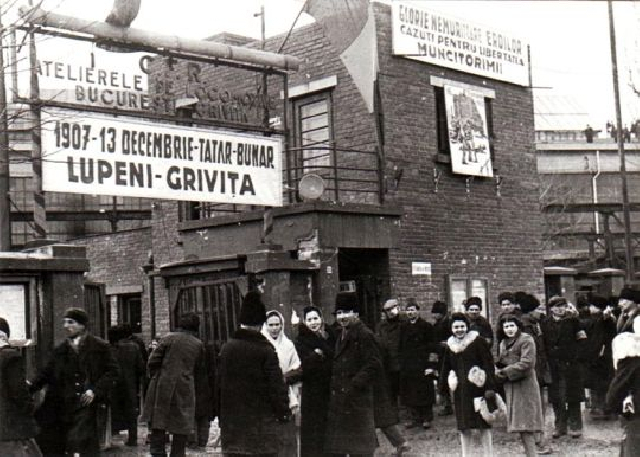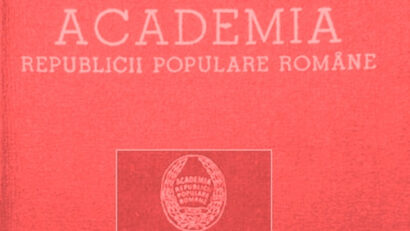The February 16, 1933, railway workers’ strikes in Bucharest
Social upheaval and its political implications

Steliu Lambru, 27.02.2023, 14:00
A deep economic crisis hit the whole world between
1929-1933. Also known as the Great economic Crash, the crisis, among other
things, translated into violence, an increasingly poor living standard, strikes
and protest rallies. Romania was also marred by this crisis, having its dismal share
of the aftermath and the ensuing social unrest. Strikes and protest rallies
flared up countrywide, especially in the industrial regions. Illustrative of such
a situation was the 1929 miners’ strike in Lupeni. Back then workers were
protesting against the so-called sacrifice curbs, meaning salary cuts and price
hikes. During the aforementioned four-year span, another strong protest
movement was the strike staged over January-February 1933 by the railway
workers employed by Bucharest’s Grivita Repair workshops. However, the strike
was equally politicized by the communist regime that held Romania under its
grip between 1945 and 1989.
If we take some time to examine documents of that
time, we can detect two stages in the unfolding of events. The first stage was
the legitimate strike staged by the railway workers’ unions, who negotiated
some of the claims employers even complied with. Over January 31st
and February 2nd, 1922, the Grivita trade unions obtained an increase
in wages as well as other benefits, for their members. The second stage unfolded
after the communist and Comintern-controlled unions were a lot more focused on their political claims. We
recall the Comintern used any form of social unrest to cause instability.
Negotiations were brought to a standstill
for a couple of days, while immediately afterwards, on the morning of February
16, 1933, the government took forceful action against the 4,000 workers who had
barricaded themselves on the premises of the repair workshops. The gendarmes’
intervention claimed the lives of seven workers, while 15 others were wounded. 160 workers were arrested.
The communist regime that was instated in Romania after
1945 had been constantly using that strike as a propaganda tool and for the particular
reason whereby communist leader Gheorghe Gheorghiu-Dej had been employed by
Grivita, where he was one of the instigators and where he was imprisoned. Notwithstanding,
after 1989, archive research and the interviewing of the very few surviving
witnesses have revealed a different kind of reality. In 1998, Radio Romania’s Oral
History Centre interviewed engineer Constantin
Negrea, who in 1927 was a young employee with the Romanian Railway Repair Workshops.
Negrea reminisced the 1931 protest rallies he joined himself with the 800
workers, and which claimed the lives of two people.
Constantin Negrea:
In 1931, certain
problems occurred. We had been threatened with the sacrifice curb. And we, on
January 29, 1931, we staged a protest rally against the implementation of the
sacrifice curb. We were deprived of our dues, bit by bit. And then, we took to the
streets after 4 pm, heading towards the Grant Bridge, to the Repair workshops,
we wanted to get there. We also had a couple of sergeants in tow, they were
accompanying us. We were shouting we did not want the sacrifice curb. When
we hit the Grant Bridge, we got shot at! One man, Craciun, died, he was a carpenter,
and a Jew, Schwartz, who came from
Oradea to get married. So there were two people dead!
Two years later, the 1933 strikes began with staging
protest rallies, just like their predecessors, yet they changed the tactics, so
their voice could be better heard.
Instead of moving about and shouting in the street we
didn’t want the sacrifice curb, we replaced that with the activation of the siren
every thirty minutes, many times. We replaced taking to the streets in protest
rallies. We began to organize ourselves in union groups and everyone knew on
the day of 15 we were supposed to rally, all of us, even though the frost was
so harsh. We intended to get out in the repair workshops’ courtyard where there
was some kind of a little park set up on the premises. Constructions works for
the park were not completed, so a couple of sand loads had been unloaded, and
there was a sand bank there. Well, several cauldrons were brought there, 5,
maybe 6, where we warmed ourselves lighting a fire. After that, a plank
barricade was erected at the back entrance of the Locomotives Division, it was
an entrance there and there also was a roof.
Despite strikers’ radicalism, among
them there were people who were talking sense and the fears they voiced turned out
to be real, in the long run.
Evening set in and,
logically, the people there, there was a one Mogos who worked at the plant and there
was another one, they stepped aside, they kind of dodged, and said: We get
fired and we won’t be able to earn our keep anymore! They were older, more sensible,
more well-advised, quite unlike us, who were younger. The last time we rallied
was around 5 pm, at five past I’d already made for the siren, and in ten
minutes I walked back to the gates. At 5.45am sharp, live rounds were fired. They
shot on sight and six people died, that’s how many were shot dead.
The dead and the communist
organizers, who were sentenced to prison, saw their worst when the strike of
February 1933 ended. The events in Grivita that happened 90 years ago were the events
of a generation that firmly opposed the deterioration of their lives. Sadly,
the February 1933 strikes were partially hijacked by the radical communists, the advocates of
a criminal regime.(EN)
.




























